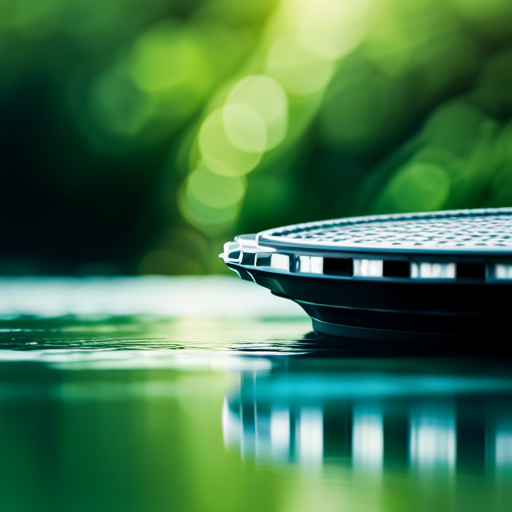Are you a swimming enthusiast who loves to take a dive into any water body? Well, if you’re planning on swimming in any water source, you should be aware of the potential risks of PFAS contamination.
PFAS, also known as per- and polyfluoroalkyl substances, are a group of man-made chemicals that are used in various products, including firefighting foams, non-stick cookware, and waterproof clothing. Unfortunately, these chemicals can also contaminate water sources and pose a risk to human health.
Before diving into any water source, it’s crucial to learn about the potential risks of PFAS contamination and the precautions you should take to reduce your exposure. While state health agencies generally consider swimming in PFAS water safe, it’s essential to be aware of the guidelines to ensure you’re protected.
In this article, we’ll explore whether swimming in PFAS-contaminated water is safe or scary and what you can do to reduce your risk of exposure. So, let’s dive in and learn how to keep yourself safe while enjoying your favorite pastime.
Key Takeaways
– Swimming in water with PFAS contamination is generally safe, but children should be supervised to prevent them from swallowing water and people with cuts or open wounds should limit their time in the water.
– Dogs can swim in water with PFAS in it.
– The risk of PFAS exposure from swimming in contaminated water is low, and following guidelines such as avoiding swallowing water while swimming, limiting time in the water, and choosing swim areas that are less likely to be contaminated can further reduce the risk.
– Pregnant women should take extra precautions.
PFAS Contamination Risks
You may be wondering about the risks of PFAS contamination and how it can affect your health if you come into contact with it through water, food, or consumer products. The truth is that PFAS exposure can increase the risk of certain health problems like cancer, liver damage, thyroid problems, infertility, and pregnancy complications.
These chemicals do not break down in the environment, so they can contaminate water supplies through various sources, including industrial discharge, landfill runoff, and firefighter foam. PFAS can also be found in food and consumer products, such as nonstick cookware and waterproof clothing.
The environmental impact of PFAS contamination is also a concern. These chemicals can accumulate in the environment and enter the food chain, affecting wildlife and ecosystems. PFAS have been found in high concentrations in some areas of the United States, leading to the closure of wells and the implementation of water treatment programs.
It’s important to be aware of the risks of PFAS exposure and take precautions to minimize your exposure, especially if you live near sites where PFAS are produced or used.
Exposure Prevention Guidelines
Follow these guidelines to reduce your risk of exposure to harmful chemicals in contaminated water. When swimming in water that has PFAS in it, it’s important to avoid swallowing the water. This is because PFAS can accumulate in your body over time and increase the risk of certain health problems.
Additionally, people with cuts or open wounds should limit their time in the water to reduce the risk of PFAS entering the body through the skin.
To further reduce your risk of exposure, it’s recommended to choose swim areas that are less likely to be contaminated. This can include swimming in pools or hot tubs that are regularly maintained and tested for PFAS contamination.
When sailing, fishing, water skiing, or jet skiing in PFAS contaminated water, it’s important to not eat any fish caught in the water.
By following these guidelines and taking extra precautions if pregnant, you can swim with confidence knowing that the risk of PFAS exposure is very low.
Special Precautions for Pregnant Women
If you are pregnant, it is important to take extra precautions when in contact with contaminated water. PFAS exposure during pregnancy can have serious health implications for both you and your unborn child. Studies have shown that exposure to PFAS during pregnancy can lead to decreased birth weight, delayed development, and other adverse health effects.
To reduce your risk of exposure, it is recommended that pregnant women avoid swimming in water with known PFAS contamination. If you must swim, take extra precautions such as wearing a protective swimsuit, avoiding swallowing water, and limiting time in the water. It is also important to stay informed about PFAS contamination in your area and to choose swim areas that are less likely to be contaminated. By taking these precautions, you can help protect yourself and your unborn child from the potential health concerns associated with PFAS exposure during pregnancy.
| Pregnancy Concerns | Health Implications | Precautions |
|---|---|---|
| Decreased birth weight | Delayed development | Avoid swimming in water with known PFAS contamination |
| Adverse health effects | Wear a protective swimsuit | |
| Avoid swallowing water | ||
| Limit time in the water | Shower and wash off after swimming |
Conclusion
So, is swimming in PFAS water safe or scary? While state health agencies generally deem it safe, it’s important to take precautions to reduce your risk of exposure.
Avoid swallowing water, showering after swimming, and washing your swimsuit separately from other laundry. Pregnant women should take extra precautions, since PFAS exposure has been linked to developmental problems in babies.
While it’s understandable to be concerned about PFAS contamination in water, following these guidelines can help ensure a safe and enjoyable swimming experience. By taking these precautions, you can minimize your exposure to PFAS and continue to enjoy the many benefits of swimming.
So grab your swimsuit, hit the pool, and have fun!
